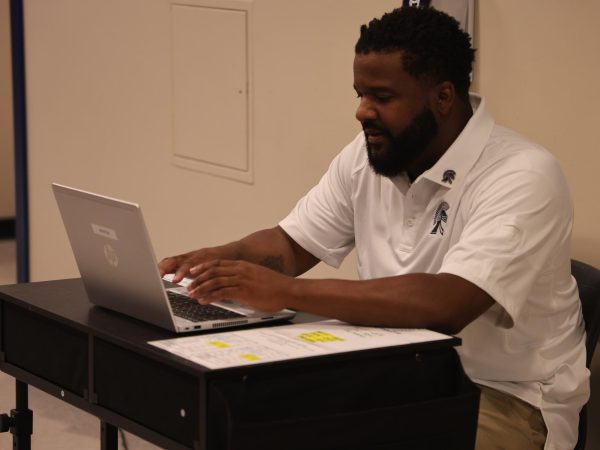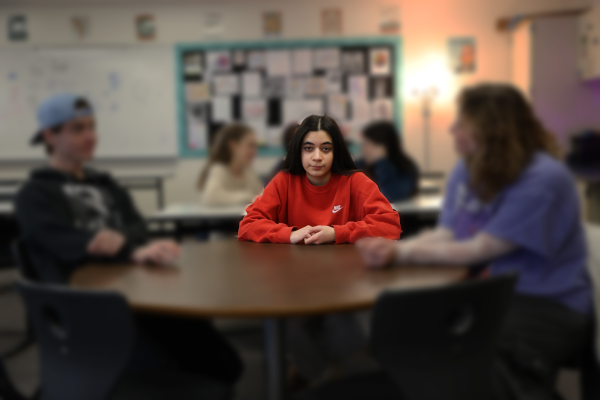ELL Teacher Adjusts to Virtual Learning
Steven Neal gives 2 students book to use in ELL class. These books were at all different levels so each student could learn at their level. Courtesy photo Ceniad.
Teaching and learning virtually during COVID can be difficult for any class but for the English Language Learners (ELL) class, it is especially difficult. This class provides assistance for students of all levels who are gaining proficiency in English.
The challenges are varied. One clear one was the gap in language acquisition between being in a full-time school surrounded by English speakers and being at home. According to the Center for Advanced Language Acquisition Immersion, immersion can make the learning process much quicker.

“Some of my students are at different points of that journey, some well like to speak in English with their siblings, but when they talk with their parents they’re speaking in Arabic,” Steven Neal, the ELL teacher said.
Neal also encountered unexpected issues. One issue was that many ELL students lacked the technological vocabulary which they were assumed to have in many of the tutorials surrounding Google Classroom.
“I got iPads from my classroom and delivered them to people’s houses and had to teach through a closed door on how to find some things. So that’s been, that was the initial hurdle,” Neal said.
After figuring that out things still weren’t easy. The classroom had to rethink strategies because they were not in a physical space.
“I use a lot of us a lot of images use a lot of acting out using a lot of like physical response strategies to help comprehension. And I just can’t do those through a tiny screen on Google Meet,” Neal said
Despite these challenges, the classroom has gotten into a flow and is starting to develop new strategies and ways to use technology to assist the learning process. Neal even says he plans on incorporating technology into his regular classroom when school is in person.
“To be a student in the 21st century, you need to have text, you need to be literate with technology. And also, for many of my students who are intending on pursuing post-secondary schooling. You need to have these technological skills,” Neal said.

Marie Adele Grosso is a member of the Class of 2022 and is the Managing Editor for Portrait. This is her second year on staff as a Junior. Marie Adele’s...








